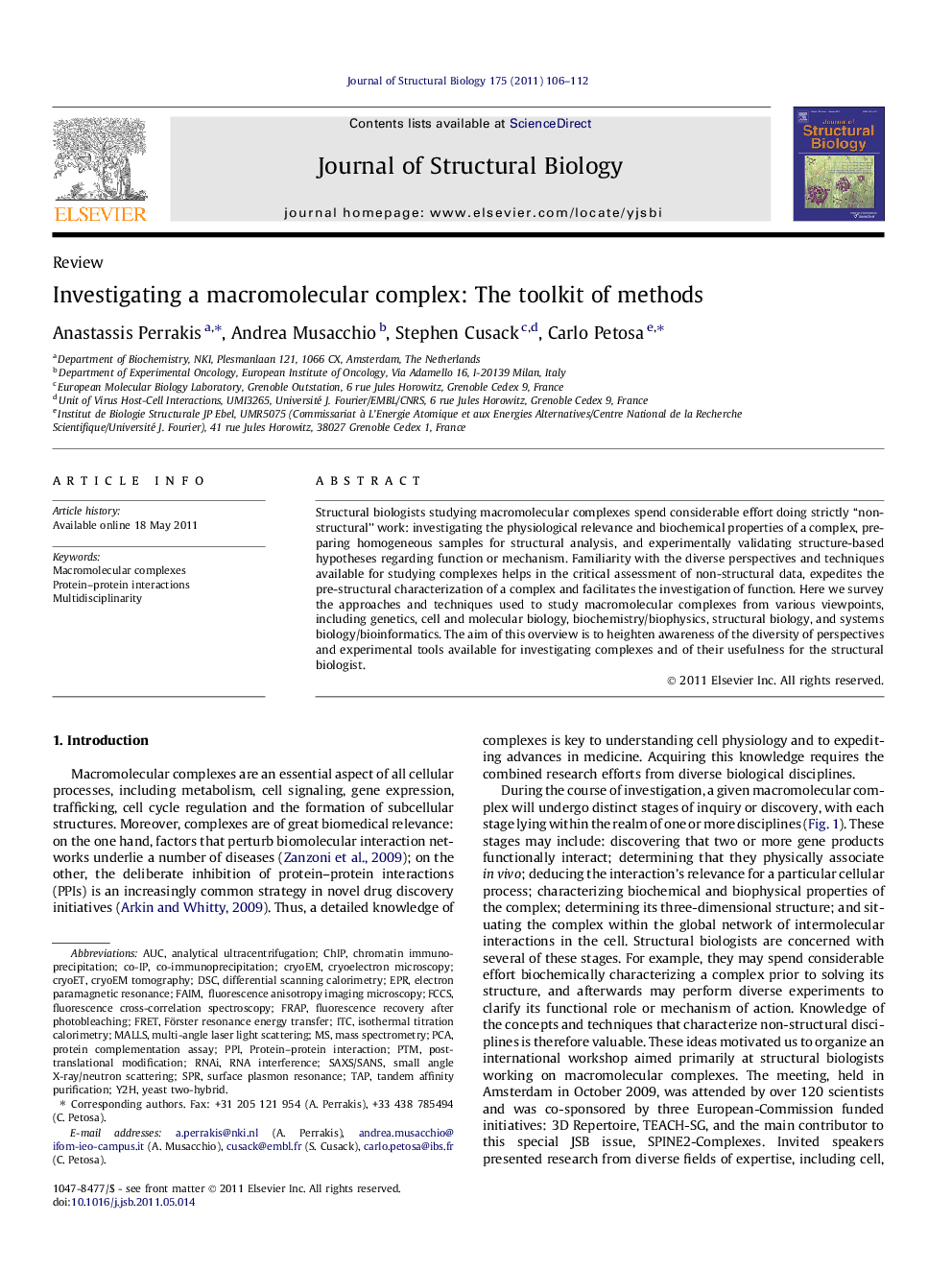| Article ID | Journal | Published Year | Pages | File Type |
|---|---|---|---|---|
| 5914699 | Journal of Structural Biology | 2011 | 7 Pages |
Abstract
Structural biologists studying macromolecular complexes spend considerable effort doing strictly “non-structural” work: investigating the physiological relevance and biochemical properties of a complex, preparing homogeneous samples for structural analysis, and experimentally validating structure-based hypotheses regarding function or mechanism. Familiarity with the diverse perspectives and techniques available for studying complexes helps in the critical assessment of non-structural data, expedites the pre-structural characterization of a complex and facilitates the investigation of function. Here we survey the approaches and techniques used to study macromolecular complexes from various viewpoints, including genetics, cell and molecular biology, biochemistry/biophysics, structural biology, and systems biology/bioinformatics. The aim of this overview is to heighten awareness of the diversity of perspectives and experimental tools available for investigating complexes and of their usefulness for the structural biologist.
Keywords
DSCFCCSPTMMALLSCryoETcryoEMY2HITCPPIFRAPAUCPCARNA interferenceRNAianalytical ultracentrifugationProtein complementation assaypost-translational modificationFörster resonance energy transferFRETchromatin immunoprecipitationEPRElectron paramagnetic resonanceSurface plasmon resonanceSPRTandem affinity purificationProtein–protein interactionProtein–protein interactionsCo-IPTAPMass spectrometryFluorescence cross-correlation spectroscopyfluorescence recovery after photobleachingMacromolecular complexesyeast two-hybridCryoelectron microscopyCo-Immunoprecipitationmulti-angle laser light scatteringMultidisciplinarityCHiPIsothermal titration calorimetryDifferential scanning calorimetryFAIM
Related Topics
Life Sciences
Biochemistry, Genetics and Molecular Biology
Molecular Biology
Authors
Anastassis Perrakis, Andrea Musacchio, Stephen Cusack, Carlo Petosa,
